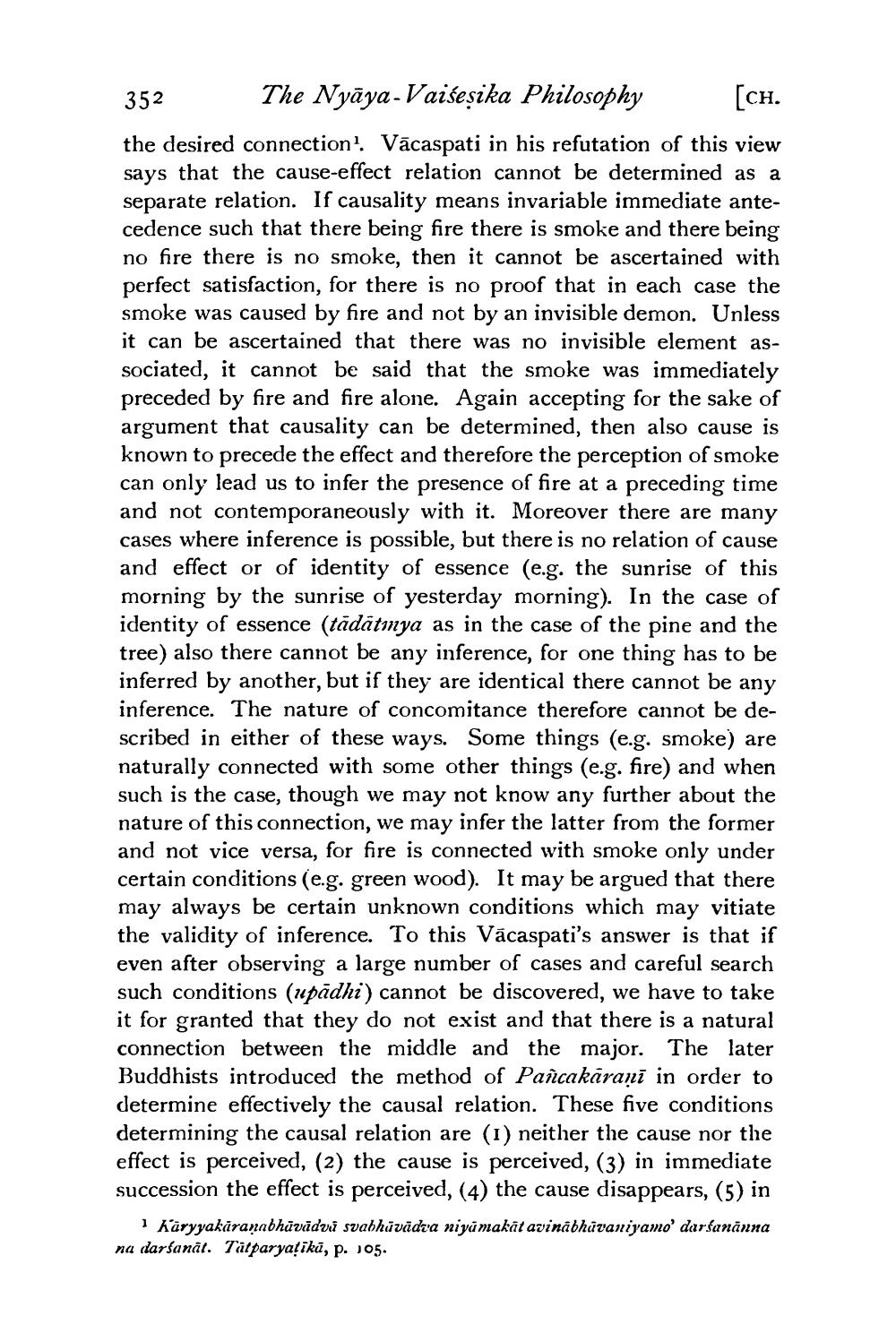________________
352 The Nyāya-Vaiseșika Philosophy [ch. the desired connection!. Vācaspati in his refutation of this view says that the cause-effect relation cannot be determined as a separate relation. If causality means invariable immediate antecedence such that there being fire there is smoke and there being no fire there is no smoke, then it cannot be ascertained with perfect satisfaction, for there is no proof that in each case the smoke was caused by fire and not by an invisible demon. Unless it can be ascertained that there was no invisible element associated, it cannot be said that the smoke was immediately preceded by fire and fire alone. Again accepting for the sake of argument that causality can be determined, then also cause is known to precede the effect and therefore the perception of smoke can only lead us to infer the presence of fire at a preceding time and not contemporaneously with it. Moreover there are many cases where inference is possible, but there is no relation of cause and effect or of identity of essence (e.g. the sunrise of this morning by the sunrise of yesterday morning). In the case of identity of essence (tādātınya as in the case of the pine and the tree) also there cannot be any inference, for one thing has to be inferred by another, but if they are identical there cannot be any inference. The nature of concomitance therefore cannot be described in either of these ways. Some things (e.g. smoke) are naturally connected with some other things (e.g. fire) and when such is the case, though we may not know any further about the nature of this connection, we may infer the latter from the former and not vice versa, for fire is connected with smoke only under certain conditions (e.g. green wood). It may be argued that there may always be certain unknown conditions which may vitiate the validity of inference. To this Vācaspati's answer is that if even after observing a large number of cases and careful search such conditions (upādhi) cannot be discovered, we have to take it for granted that they do not exist and that there is a natural connection between the middle and the major. The later Buddhists introduced the method of Pancakarani in order to determine effectively the causal relation. These five conditions determining the causal relation are (1) neither the cause nor the effect is perceived, (2) the cause is perceived, (3) in immediate succession the effect is perceived, (4) the cause disappears, (5) in
Käryyakāraṇabhūvādvi svabhūvādta niya makāt avinābhāvaniyamo' darsanānna na darśanāt. Tātparyaţikā, p. 105.




